
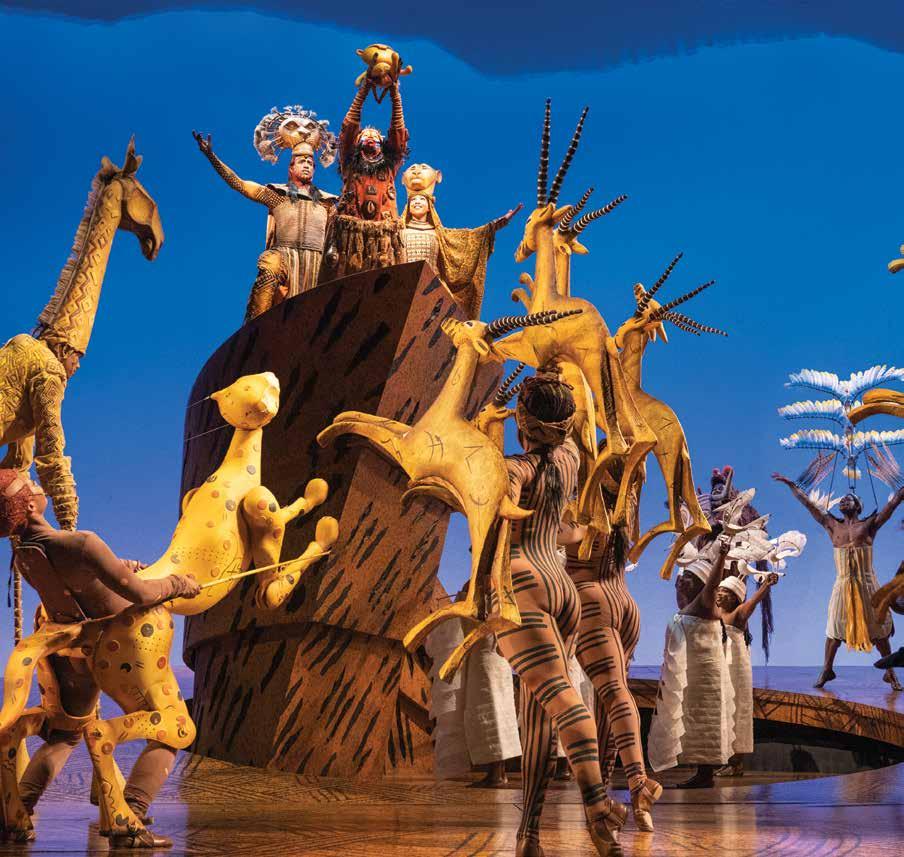





Pink salmon opportunities only happen in odd-numbered years!
Follow our blog series for more information on this much-loved, family friendly adventure.
Scan the QR code to read more!































EDUCATION
Navigating Non-Traditional Tracks 14
From AP to Cambridge, find the right fit for your high schooler
RAISING GREAT KIDS
You’ve Got … Cooties? 30 Womp, womp. Your kid won the lice lottery — now what?
CELEBRATIONS The Latest Party-Planning Trend 38 Let technology do the heavy lifting for your next birthday extravaganza
Fall Arts Guide 6 Theater season is heating up!
Here’s our roadmap to the hottest tickets in town
Homework Help 2.0 23
AI-powered tutors are having a moment. Should your kids use them?
Fun
+ ABOUT Education Meets Adventure 33 Keep kids learning with educational tours around the Sound





SEPTEMBER 2025, VOL. 22, NO. 9
PUBLISHER Alayne Sulkin

For kids like mine that have trouble matching — pick out clothes together and set them out the night before.
EDITORIAL
HEAD OF CONTENT + STRATEGY
Kristen Russell
MANAGING EDITOR Allison Sutcliffe
ASSOCIATE EDITOR Kari Hanson
FAMILY FUN EDITOR
Meredith Charaba
CALENDAR EDITOR Julie Dodobara
CONTENT PRODUCTION COORDINATOR Madison Nikfard
COPY EDITOR Alex Frost
CONTRIBUTORS
Gemma Alexander, Tiffany Doerr Guerzon, Sandi Schwartz
DIGITAL MARKETING
MARKETING DIRECTOR Lindsey Carter
MARKETING DESIGN SPECIALIST Angela Goodwin
MARKETING COMMUNICATIONS SPECIALIST Devon Hammer

On days when I need to run out the door to get the baby to Grandma’s house, I make sure we have food in the house that I don’t need to make — things we can even eat in the car like yogurt pouches, granola bars and fruit.

SOCIAL MEDIA SPECIALIST Brooke Collins
ADVERTISING SALES + PARTNERSHIPS
DIRECTOR OF COMMUNITY
PARTNERSHIPS + ADVERTISING SALES
Jessica Collet
SENIOR ADVERTISING AND PARTNERSHIPS MANAGER Ida Wicklund
EVENTS + COMMUNITY PARTNERSHIPS SPECIALIST Brenna McCown
ADVERTISING CLIENT SERVICES SPECIALIST
Mallory Dehbod
CLIENT SERVICES
ADMINISTRATIVE ASSISTANT Bronwyn Jones
DIGITAL ADVERTISING + MARKETING SPECIALIST
Taryn Weiner
PRODUCTION COORDINATOR
Tamryn Nell
ART + PRODUCTION
SENIOR DESIGNER Amy Chinn
ADMINISTRATION BUSINESS MANAGER Carolyn Brendel
OPERATIONS ASSISTANT Erika Widjaja
I am a “do what you can the night before” person (i.e., make lunch, pack backpack) because I don’t think well first thing in the morning!

I remind my son to place his backpack, water bottle and shoes (they’re always MIA) by the door before he goes to bed to avoid that last-minute frantic search in the morning.

Breakfast in bed has been a huge game changer for us because it eliminates the battle to get out of bed. With a neat child, it makes the transition so much smoother.

When mine was younger, I set his bedroom clock 15 minutes early. — Erika Widjaja, operations assistant
PARENTMAP EDITORIAL ADVISORY BOARD
Benjamin Danielson, M.D. CLINICAL PROFESSOR, UW SCHOOL OF MEDICINE PRACTICING PHYSICIAN, UW MEDICINE
Joan Duffell RETIRED EXECUTIVE DIRECTOR, COMMITTEE FOR CHILDREN
John Gottman, Ph.D. THE GOTTMAN INSTITUTE PROFESSOR EMERITUS, UNIVERSITY OF WASHINGTON
Laura Kastner, Ph.D. PSYCHIATRY + BEHAVIORAL SCIENCES, UNIVERSITY OF WASHINGTON
Bea Kelleigh VICE PRESIDENT, DOVETAILING, LLC
Yaffa Maritz, M.A. FOUNDER, LISTENING MOTHERS + COMMUNITY OF MINDFUL PARENTING
Daniel J. Siegel, M.D. EXECUTIVE DIRECTOR, MINDSIGHT INSTITUTE
CONTACT
INFORMATION
Advertising information 206-709-9026 or advertising@parentmap.com Fax 206-709-9031
Calendar submissions calendar@parentmap.com
Editorial submissions editor@parentmap.com
Distribution distribution@parentmap.com
Administration 206-709-9026, parentmap.com
Subscriptions subscriptions@parentmap.com
Subscription rate 1 year: $12
ParentMap is published monthly.
PMB #190, 7683 S.E. 27th St., Mercer Island, WA 98040 All rights reserved; reproduction in whole or part without permission is prohibited. © ParentMap 2025 • printed in Oregon
Still searching for the “why”?
If your child has multiple diagnoses, uneven skills, or doesn’t fit neatly in any one box—you’re not alone.
What Makes Us Different?
• 1:1 care with a board-certified pediatric neuropsychologist
• In-depth evaluations that uncover the how and why behind learning, attention, and emotional challenges
• Expertise in twice-exceptional, neurodivergent, and misunderstood profiles
• Clear, actionable recommendations that help at home, at school, and in life

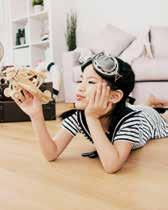










By Gemma Alexander
As the days grow shorter and the air turns cooler, our region’s stages and galleries come alive. Fall doesn’t just mean back-to-school; it’s the beginning of the arts season as well. The creative energy offers dazzling yet kid-friendly performances and eye-opening exhibitions to give families dozens of reasons to get out and explore. We’ve rounded up more than 20 can’t-miss shows and exhibits happening from September through December — so grab your calendar and start planning your family’s most artful autumn ever.
Musical theater
“Annie”
“Annie” fans have two options for local productions of the beloved musical this fall. Ballyhoo Theatre and Seattle’s Performers (with actors ages 6–10) copresent “Annie” in Lynnwood, while Tacoma Musical Playhouse presents its own production of the play for families in the South Sound.
Sept. 12-Oct. 5, Tacoma Musical Playhouse, Tacoma
Dec. 5–19, Edmonds College Black Box Theatre, Lynnwood
“Brigadoon”
Described as one of the most romantic musicals of all time (but since it came out in 1947, appropriate for anyone who can handle a Disney movie), “Brigadoon” is a story about two Americans who stumble
into a magical Scottish village that only appears for one day every 100 years.
Sept. 16–Oct. 19, Francis J. Gaudette Theatre, Issaquah
Oct. 25–Nov. 16, Everett Performing Arts Center, Everett
“13: The Musical”
After his parents divorce, middle schooler
Evan Goldman finds his cool New York City life suddenly replaced by a sleepy Indiana town. He needs to establish his place in the popularity pecking order of this strange new social system or risk spending adolescence among the outcasts in this production featuring an adolescent cast.
Oct. 10–19, Studio East, Kirkland
“The Lightning Thief”
Even die-hard fans of Rick Riordan’s Percy
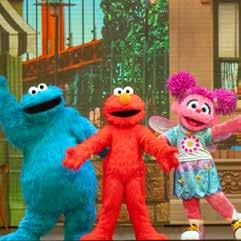
Jackson series hated the movie — but the musical, with its rock music score, got much better reviews. Now your family can enjoy Percy Jackson’s adventures live on Vashon Island. Free admission for kids age 12 and younger (with adult ticket purchase).
Nov. 14–15, Vashon Center for the Arts, Vashon
“Rodgers & Hammerstein’s Cinderella”
Although it’s based on the musical, this Broadway adaptation offers a contemporary take on the story. The songs loved by generations are still there, but the story is updated for a post- “Ella Enchanted” generation. Ella meets a dragon-slaying young prince who is just assuming control of his government and helps spark transformation to empower the disenfranchised in their kingdom. There will be two local productions this fall: the Driftwood Players community theater in Edmonds and Studio East youth theater in Kirkland.
Nov. 21–Dec. 14, Wade James Theatre, Edmonds
Dec. 12–21, Studio East, Kirkland
“The Lion King”
See the Disney cartoon brought to life on stage in the touring production of the Broadway musical “The Lion King.”










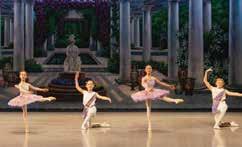








































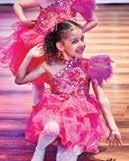

continued from page 7
Hyperbole is common when people talk about Disney’s spectacular live shows, but this one might actually be “The World’s No. 1 Musical.”
Dec. 4–Jan. 4, 2026, Paramount Theatre, Seattle
Live theater
“Fancy Dancer”
An autobiographical story by Larissa FastHorse (whom adults may know as the writer of “The Thanksgiving Play”) describes how she was inspired as a child by prima ballerina Maria Tallchief to become one of only a handful of professional Native American ballerinas.
Sept. 18–Nov. 2, Seattle Children’s Theatre, Seattle

“Sesame Street Live: Elmo and Friends Say Hello”
Your littles will sing, dance and play with Elmo, Abby Cadabby, Cookie Monster and Elmo’s puppy, Tango, at this touring all-ages live performance. Families will have two chances to see this incredibly popular production — in Seattle and Tacoma — on the tour.
Oct. 17, Paramount Theatre, Seattle Oct. 19, Pantages Theater, Tacoma
“The Snow Queen”
Olympia Family Theater collaborates with String and Shadow Puppet Theater to produce this imaginative vision of Hans Christian Anderson’s classic tale, blending storytelling, puppetry and theater techniques to warm even the coldest heart.
Dec. 4–28, Olympia Family Theater, Olympia
“Gingerbread Boy”
Thistle Theatre is back after a hiatus with two public performances of “Gingerbread Boy” scheduled in December. This holiday-adjacent puppet show follows






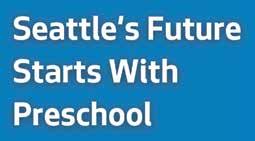





Sunny Xia conductor Seattle Symphony
Take a journey into the woods with the beloved folk tale of Peter and the Wolf. Sergei Prokofiev’s inventive storytelling pairs all the fanciful characters with musical instruments to help young listeners identify the many sounds of the orchestra.



continued from page 9 the adventures of a gingerbread cookie who interrupts the production of sweet treats after too much spice is added to his batter.
Dec. 2, Sammamish Library, Sammamish Dec. 8, Seattle Center, Seattle
Mukai Farm & Garden
Take advantage of the last sunny days before the rains return and visit the historic Mukai Farm & Garden for the Japan Festival on Sept. 6. If you miss the festival, open houses are offered to tour the farmhouse and its exhibits that offer a glimpse into the life of the Mukai family before the WWII incarceration of Japanese Americans. The grounds are open and free to the public daily. Add a visit to the small but charming Vashon Heritage Museum just around the corner to soak up more of the island’s history.
Sept. 6, Mukai Farm and Garden, Vashon Island
This new exhibition of historic photos by James “Spider” Martin, a then-25-year-old staff photographer for the Birmingham newspaper, documents the 1965 Selma to Montgomery civil rights marches. Not in living color, but poignant and powerful in black and white, Martin’s photos inform a new generation about early events in the ongoing struggle for a fair and just America.
Current Exhibit, Northwest African American Museum, Seattle
Like generations of her family before her, American multidisciplinary artist Nina Katchadourian spent her child-
hood summers on the Finnish island of Bodö, where most of the work in this exhibition was developed. Scattered throughout the museum, her multimedia artworks explore the passions and preoccupations of her childhood.
Through Oct. 26, National Nordic Museum, Seattle
Marking 50 years since the United States pulled out of Vietnam, the Washington State Historical Society’s exhibit honors Vietnam veterans and their wartime experiences through stories, objects, and film with a unique focus on the objects soldiers deliberately brought home to remember the war.
Through Nov. 16, Washington State History Museum, Tacoma
If you missed it over the summer, football season is an even better time to check out MOPOP’s special exhibition covering 50 years of football history in honor of the Seahawks’ 50th season.
Through Jan. 1, 2026, MOPOP, Seattle
Wing Luke Museum presents DISplace, an exhibition that sheds light on the often-overlooked histories and movements connecting Hawaii and the Pacific Northwest. From the arrival of the first documented Native Hawaiians to the West Coast in 1787 to now, DISplace features visual art by Native Hawaiians, family stories and ephemera, historic photographs, and archival objects.
Through Jan. 4, 2027, Wing Luke Museum, Seattle







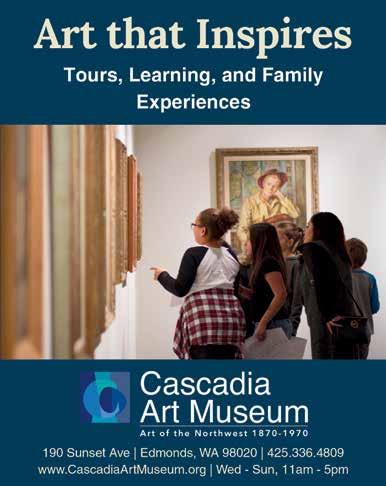
























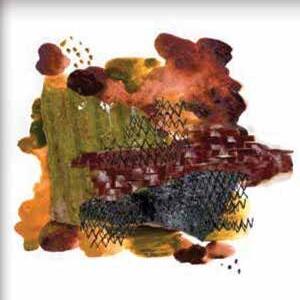
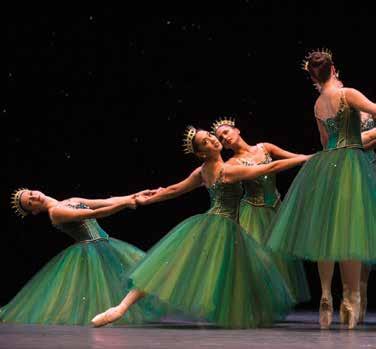
continued from page 11
Music and dance performances
Koo Koo
For those not already in the kindie know, Koo Koo is a family-friendly dance-along musical comedy show. Performers Bryan and Neil perform with an iPod, two mics, a giant rainbow, gold sneakers and an all-ages audience that already knows all the dance moves thanks to YouTube.
Sept. 7, Kirkland Performance Center, Kirkland
Parents are commonly advised to introduce children to ballet through one of the fairy tales, but the truth is, dance is the most visceral, direct — and as result, accessible — art form. Kids will have no trouble enjoying the high concept Jewels program that introduces viewers to three different ballet traditions as gemstones: elegant French Emeralds, jazzy American Rubies and the grandeur of Russian Diamonds.
Sept. 26–Oct. 5, McCaw Hall, Seattle
Nrityagram Dance Ensemble
The Nrityagram Dance Ensemble is India’s foremost Odissi dance company. Odissi, a traditional Indian dance style that originated as a sacred ritual dedicated to the gods more than 2,000 years ago, is presented in a program called Khankanā, “the sound of dancing feet,” created by choreographer Surupa Sen. Oct. 11, Edmonds Center for the Arts, Edmonds
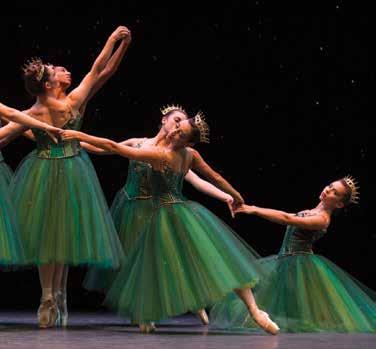
“The Pirates of Penzance”
When one of the nation’s top opera companies produces a show that’s usually considered musical theater, adults may be inclined to examine the very definition of opera. But kids will simply enjoy the G-rated silliness, tongue-twister lyrics (in English) and pirate-themed adventures of what is arguably Gilbert & Sullivan’s greatest hit. On Oct. 26, Family Day, tickets start at $25. Oct. 18–Nov. 1, McCaw Hall, Seattle
Grand Kyiv Ballet’s Don Quixote
The Ukrainian national ballet in exile presents Don Quixote, a story ballet that combines picaresque comedy with some of the world’s most technically challenging choreography. The story diverges from Cervantes’ lengthy narrative to focus on Quixote as a matchmaker, helping the young lovers Kitrig and Basil overcome parental disapproval to reach their happily ever after. Oct. 19, Edmonds Center for the Arts, Edmonds
“The Magical Music of Harry Potter in Concert”
The Magical Film Orchestra & Choir presents captivating illusions and a special appearance by a guest star from the Harry Potter films (hint: it’s one of the Weasleys) in a concert performance that blends storytelling with music from the movies.
Dec. 6, Rialto Theater, Tacoma ■
Seattle-based freelance writer Gemma Alexander focuses on the intersection of parenting and the arts. See more of her work at gemmadeealexander.com.








Choosing the right accelerated program is essential for high school success
By Gemma Alexander
There was a time teens went to high school and simply took the classes offered. If they did well, they got into college and if they got really good grades, they might even have been awarded a scholarship. Things are not so simple now. These days, top private universities want to see real-world achievements such as entrepreneurship or founding a nonprofit, and even state schools expect more than the standard high school curriculum. But with a variety of advanced academic curricula to choose from, how can families decide which one is best for their student?
First, let’s look at the accelerated high school programs offered.
Advanced Placement (AP) is a program created by College Board, the notfor-profit organization behind the SAT. AP courses are college-level courses taught in high school by high school teachers. Students who take AP courses are eligible to take AP tests at the end of each school year. Based on their test scores, colleges may then grant college credit for the high school course or waive prerequisites, allowing the student to test in to higher level
If your primary concern is earning college credits, AP and Running Start offer the most potential.
coursework in their first year. (You can look up your planned university’s AP credit policy on the College Board website.) There is no cost for taking an AP course, but each test costs $99.
Most high schools offer at least one AP course, from which students can select only those that relate to their college plans. For example, a student considering a chemistry major might want to try testing out of basic chemistry so that they can take more advanced chemistry right away when they enter college. Or a student who plans to double major in the humanities may take AP calculus to free up space for more courses in their area of interest.
Cambridge Advanced International Certificate of Education
The Cambridge Advanced International Certificate of Education, developed by Cambridge University in England, is an internationally recognized secondary school curriculum. Universities worldwide treat the AICE Diploma as the equivalent to UK GCSE and AS and A Levels, with 95 percent
of AICE students enrolling in advanced education.
The program is known for flexibility in course selection and focuses on the development of critical thinking and problem-solving skills. Cambridge offers a pathway with stages (Lower Secondary, IGCSE, AS/A Levels) that integrates with or replaces traditional high school. Students must complete a minimum of seven Cambridge International AS & A Level courses and pass the corresponding exams to earn an AICE Diploma. There are only six schools in Washington state that offer Cambridge courses.
The International Baccalaureate (IB) Diploma Programme (DP) is an internationally recognized program that meets all Washington state and district high school requirements with a curriculum made up of six traditional subject areas as well as the IB core curriculum. To receive the IB Diploma, students must complete the core components and exams, for which they may also receive college credit. IB
If cost is of concern, choose Running Start. Running Start students are only responsible for incidental costs and transportation –there is no tuition.
replaces a student’s regular courses for the final two years of high school, but since only a handful of local schools offer the program, families should decide whether to pursue IB before selecting a high school. There is no cost for the program, but exam registration fees can be up to $175 each. At some schools, students can take IB courses without taking IB exams or pursuing the diploma.
If pure academic challenge is your goal, IB is generally considered the most rigorous program with the highest workload (Cambridge requires fewer projects).
Running Start is a dual credit program that allows 11th and 12th grade students to take college courses at Washington’s 34 community and technical colleges. They earn credit for these courses, which can count toward graduation requirements, on both their high school and college transcripts. All of Washington’s public four-year colleges and universities accept Running Start credit.
Which one is best?
These four high school tracks are not identical, and one of them might suit your child’s temperament and learning style better than the others. The differences among them also create unique challenges and advantages that could matter for your family’s education goals.
For college admissions, in most cases, which track your child pursues matters less than how fully they engaged with their courses: colleges are looking at the difference between earning a full IB diploma and a partial one. Performance is also important; a B in a Running Start class might be better than an A in a regular high school class, but a C is not. One special case: If your child plans to attend university abroad, Cambridge (especially in the UK) and IB are better. These programs may also be beneficial if your student plans to pursue a degree with an international focus.


continued from page 15













If your primary concern is earning college credits, AP and Running Start offer the most potential. AP credits are based on test scores, so those with test anxiety will prefer Running Start. That said, it’s worth checking directly with prospective private or out-of-state schools to make sure they accept Running Start credits – not all of them do.


















If cost is of concern, choose Running Start. Running Start students are only responsible for incidental costs and transportation – there is no tuition. Although fees vary and some financial aid may be available for each program, each AP test costs about $100 and fees for a full IB or Cambridge diploma can add up to $1200.


















Challenge and logistics
If pure academic challenge is your goal, IB is generally considered the most rigorous program with the highest workload (Cambridge requires fewer projects). But a driven student can achieve the same level of academic challenge by maximizing their AP or Running Start courses.
Running Start stands out as the option that requires the most maturity from students, who must manage transportation between campuses and the complexities of a dual schedule, as well as the relative freedom to fail of college coursework. For some teens, this can feel liberating, but for those who relish the classic high school experience, any of the other three programs is preferable.
Although your options are limited by what’s available at your child’s high school, college admissions boards assure prospective students that there’s no penalty for lack of access. Your child’s application is considered relative to the opportunities offered. Even if you’re not convinced about that, all these advanced curricula options signal to colleges that your student goes beyond baseline expectations in the pursuit of learning. And each of them can provide a quality education and a strong foundation for your child’s university education and adult life. ■
Seattle-based freelance writer Gemma Alexander focuses on the intersection of parenting and the arts. See more of her work at gemmadeealexander.com.
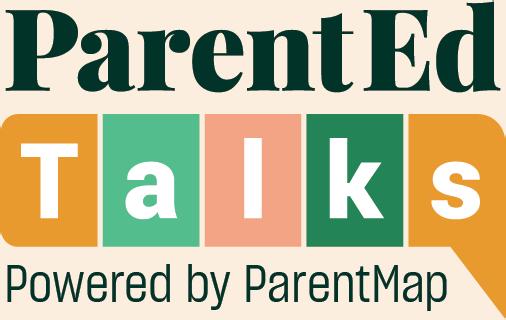


Gain practical tools, fresh insights and expert strategies to help navigate today’s most pressing parenting challenges. ParentMap’s monthly webinar series brings you live, interactive conversations with leading speakers on essential topics including youth mental health, ADHD, technology, AI and more.









ParentMap is honored to present Laura Kastner as series host, guiding each speaker in an engaging, audience-driven Q&A. Dr. Kastner is a clinical professor of psychiatry and behavioral sciences at the University of Washington and author of the acclaimed “Getting to Calm” book series.
Sept
Feeding kids shouldn’t be this stressful. Jennifer Anderson, registered dietitian, mom of two and founder of Kids Eat in Color (followed by over 2 million parents), joins us to cut through conflicting nutrition advice, share practical tips, and guide you in helping your kids build a healthy relationship with food and their bodies.
Oct. 23, 2025
Is your teen just being a teen, or is it something more? Pediatric psychologist Dr. Ann-Louise Lockhart joins us to distinguish typical adolescent behavior from early signs of mental health concerns. She’ll share practical communication tools to support your child while strengthening your bond.
Nov. 18, 2025
What will learning look like in five years — or even next fall? Join Sal Khan, visionary educator and founder of Khan Academy, for an urgent and inspiring conversation about the way AI is transforming education, what that means for your child’s learning and how you can help them adapt in a rapidly changing world.
Jan. 21,
Better understanding leads to better support. Join Dr. Sasha Hamdani, board-certified psychiatrist and ADHD specialist, for an insightful talk to help you decipher what’s really going on in your child’s brain. Discover how to spot ADHD symptoms, choose the right treatments and confidently support their mental health through everyday challenges.

Feb. 10, 2026
Breathing exercises only get you so far; real progress happens when you understand the root cause of anger. Renee Jain, founder of GoZen!, a widely used platform that helps kids build emotional strength, joins us to guide parents in understanding their child’s anger, what’s happening in the brain during outbursts and how to better respond in the moment.

March 10, 2026
Is educational technology really helping our kids learn? Neuroscientist and educator Dr. Jared Cooney Horvath reveals why parents and educators must push back against digital overreach and restore genuine, meaningful learning for kids — at home and in the classroom.

April 22, 2026
Boys are struggling in school, in relationships and with mental health, and it may signal a deeper issue. In this eye-opening talk, bestselling author, expert and father of three Richard Reeves will share what’s behind the troubling trend and how parents can raise confident, thriving boys in today’s world.

May 12, 2026
Technology has changed, but what kids need has not. Andrea Davis, founder of Better Screen Time, joins us to guide caregivers on a slow-tech path that prioritizes family connection. Whether your family is already deeply entrenched in screen use or just starting to set boundaries, she offers hopeful, empowering strategies — and the reassurance that it’s never too late to turn things around.


Scan the QR code below to sign up for Seattle Children’s Healthy Tides newsletter. Each issue shares timely tips to keep your family as safe and healthy as they can be.
Hope. Care. Cure.™





















Celebrating 60 Years of Exceptional Early Learning with Built-in Parent Education
• Infant & Toddler classes (newborn to age 3)
• Cooperative Preschool classes (ages 2-6)
• Positive Discipline, Science and Art classes
• Affordable, play-rich, research-based classes
• Eastside locations in Bellevue, Issaquah, Sammamish, Mercer Island, Renton and Snoqualmie parenteducation@bellevuecollege.edu






By Sandi Schwartz

Artificial Intelligence (AI) is transforming the world, including education. Teachers are using it to develop study guides, streamline classwork, assist with note-taking, and more — all while saving an incredible amount of time.
While many parents and educators fear that students will use AI to cheat, there are some thoughtful, innovative tools to help students study, write, problem-solve and brainstorm ideas. Cutting-edge Intelligent Tutoring Systems (ITS), also
called smart tutors or AI-powered tutors, are now available to schools and families, so it’s important to explore the pros and cons of integrating these technologies into our kids’ learning routines.




continued from page 23
What is a smart tutor?
Designed to simulate the experience of working one-on-one with a human tutor, smart tutors are computer programs that use the power of AI to provide personalized instruction and feedback to students. They give instant comments, create customized exercises, and assist students based on their individual needs. Princeton Review believes these systems “have the potential to revolutionize the way students learn, offering tailored instruction and guidance without the need for a human teacher.”
Ello, Kyron Learning, Squirrel AI, Babbel and Duolingo are some of the AI tutors currently available. Khan Academy, the well-known nonprofit educational organization with more than 170 million registered users in 190 countries, recently released its AI tutor called Khanmigo.
What smart tutors can do
Smart tutors are known for their real-time monitoring and feedback capabilities, which means they closely evaluate a student’s actions and choices, providing instant reactions. This allows students to correct their work right away so they can learn from their mistakes. They also guide students through a step-by-step process to solve complex problems, such as math or science lessons, adjusting content and feedback based on the student’s progress. Next, they provide interactive learning through gamification, simulations and visual aids to keep students engaged. Finally, personalized, self-paced learning is used to help students build confidence and stay motivated as they work through the material.
Khanmigo is a great example of a smart tutor doing incredible work. Powered by GPT-4 large language models and further trained on Khan Academy’s extensive library of learning content, Khanmigo is an always-available tutor covering math, humanities, coding, social studies and other subjects.
“Students can talk to AI simulations of historical figures and literary characters, which is really fun,” says Sal Khan, founder and CEO of Khan Academy, Schoolhouse. world, Khan Lab School and Khan World School. “They can get into debates with the AI and the AI gives them feedback.” There are opportunities to work on word games, co-write and create flashcards or quizzes based on coursework.
Students can also get support from Khanmigo while working on their Khan Academy lessons. “[They can ask it] why do I need to learn this? Help me think through what the next step is. It’s really a pretty broad set of things that it’s already doing and we’re constantly adding more,” explains Khan. Khanmigo does not give students answers, says Khan. “It tries to get the students to figure it out for themselves.”
Benefits
Here are some of the main benefits that smart tutors offer to students:
• Customized learning: While traditional education typically follows a set curriculum, AI allows for more flexibility tailored to each student’s needs and skill level. Based on each student’s interactions with the material, the program recommends specific exercises, videos and tutorials.
• Adaptive pacing: The smart tutor can adjust the lesson to suit the student’s pace. This helps them better grasp the concepts before moving on to more complex material.
• Increased access to quality education: “One clear benefit of AI tutoring is that it is more accessible and can thus help far greater numbers of students,” says Heidi Waterfield, Ed.M., a tutor in San Francisco. Indeed, AI-powered tutoring programs are seen as a way to achieve educational equity since hiring human tutors is expensive and often requires a big time commitment.
• Enhanced student-teacher interaction: AI can help streamline teachers’ work, leaving more time for them to interact directly



























continued from page 24
with each student to provide catered lessons and input. Khanmigo’s writing coach feature, for example, allows teachers to assign writing activities. “Students would then do [the writing project] with AI. The AI can give them feedback. When the student is ready to submit [their work], the teacher then doesn’t just get the final output, but the whole narrative with the AI,” explains Khan. This helps the teacher understand the process the student used and cuts back on hours of work typically required for a teacher to provide the detailed, consistent feedback that the AI can do in mere seconds or minutes.
However, as with any new technology, there are some important concerns and limitations to keep in mind.
Waterfield doesn’t think computers will be replacing humans any time soon. She sees AI tutoring as a tool with the potential to help students bolster certain skills, but not as a replacement for personalized academic support. “When I work with students, I don’t just teach content, I build trust, read subtle emotional cues and craft personalized learning strategies,” she says. “I have to adapt in real time to a student’s learning style and unspoken challenges. An algorithm can’t create that connection, celebrate a student’s breakthroughs, or provide nuanced encouragement to help a child through academic struggles that ultimately lead to personal growth.”
Even Khan admits that there are some limitations to smart tutors like Khanmigo. “There are certain things that a human tutor can do that it’s going to be a while for the AI to get close to,” he says. “I think just that human to human accountability, human to human connection is very powerful. The ability for the human tutor to interface with their parents, interface with the teacher, make sense of things, hold you accountable. I think we’re trying to give Khanmigo elements of that, but that will be a long time off.”
He is very clear that he and his team don’t view it as an either-or proposition when it comes to AI versus human educators. In fact, his suite of offerings includes the sister nonprofit Schoolhouse.World that provides live tutoring on Zoom from human beings for free. “We think these things are very complimentary,” he explains. “It’s not about replacing human tutors; it’s more that the need has always been so great, and human tutors haven’t been able to meet that need. Hopefully, Khanmigo can start meeting part of that need.”



















continued from page 26
Finally, there are some privacy, security and ethical concerns. Will students use these tools to cheat? Will students and teachers become too reliant on technology at the expense of losing creativity, emotional intelligence and critical thinking skills? AI systems rely on collecting data from users to function effectively, which could be problematic down the road if it’s misused or mishandled. And how ethical is it for AI to be involved in assessing students, such as giving them grades?
As technology continues to evolve and more AI tutors become available, do some research to decide what’s appropriate for your children. Refer to Common Sense Media’s information and reviews about AI products.
Khan also encourages parents to be skeptical of new, unvetted products. “I’d be a little bit wary of a lot of the [tools] that target students. They’re essentially helping students cheat,” he warns. In addition, it’s always important to evaluate the safety and privacy of each product you consider using.







Also, many of these tools aren’t accurate enough. “If you just go to ChatGPT, or any of these [tools] … especially on things like math, it’ll make a lot of errors, and the errors aren’t just math errors. It’ll say you’re right when you’re wrong or you’re wrong when you’re right,” says Khan. On the other hand, Khan stands by Khanmigo since they have put a ton of work into dramatically reducing the error rate. “We think Khanmigo is actually now comparable, or better, to a high-quality human tutor.” It makes errors only about 2 percent of the time, according to their research.
Still not sure? Continue reading reviews and asking questions about these tools before jumping on board. Talk to teachers, parents and students about their experiences with different smart tutors. Finally, be part of the experience alongside your children as they explore working with AI programs so you can see for yourself exactly how they work and impact your children, whether positively or negatively. ■
Sandi Schwartz is a freelance writer and mother of two. She has written extensively about parenting, wellness and environmental issues. Find her work at happysciencemom.com and sandischwartz.com.






























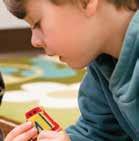






Just in time for the start of the school year — the real cost of lice for families
By Gemma Alexander
Getting rid of lice is time-consuming, expensive and stressful. But the one thing it shouldn’t be is embarrassing. Lice are right up there with cockroaches for invincibility, and if you are a parent, the odds that you will have to deal with lice are probably greater than your chances of encountering a cockroach. Parents need to learn the truth and dispel the myths about lice so that we can support each other through one of the more unfortunate childhood rites of passage.
They’re baa-ack!
When I was a kid, my mom always made me pull my hair over my shoulder at movie theaters to prevent lice that might be hiding in the upholstered seats. In those days, I had never actually heard of anyone
who caught lice that way or any other way. Lice seemed as imaginary as cooties. I was both more right and more wrong than I knew. Right because they are the same thing — cooties is slang for lice, but wrong because they are not at all imaginary. I was shocked the first time my own kids came home from school with lice.
It’s hard to get accurate information about the current prevalence of lice, and even harder to find anything about how common lice outbreaks were in the 20th century. Even data synthesized by the National Institutes of Health (NIH) showed a significant prevelance range in the Americas: between 4–60 percent. But from talking to other parents, I don’t seem to be alone in feeling that lice somehow skipped a generation.
Bedbugs recently made a comeback after almost disappearing for 60 years, and the list of antibiotic-resistant bacteria is growing. Lice populations may be following the same pattern — a dramatic drop after the invention of pesticides, and a gradual rise as chemical resistance develops. Some people blame social media and the headto-head contact of group selfies for at least part of the increase.
Lice basics
Head lice are different creatures from body lice, although both are tiny insects that feed on human blood. Head lice have lived on human scalps, eyebrows and eyelashes since before we evolved to modern humans. They spread by close contact, crawling directly from one head to another. They cannot jump or fly, and they do not live long without a human host. Pets cannot spread lice.
Dispelling lice myths
Clean people don’t get lice. Getting lice says absolutely nothing about your hygiene. Whether you wash your hair daily or never, whether your home is tidy or a health hazard, anyone can get lice.
Black people don’t get lice. See above, anyone can get lice. It is true that African Americans are much less likely to get lice — the theory is that hair texture affects the bugs’ ability to hang on — people of any race can and do get lice.
Itchy scalp is a sure sign/the only sign of lice. Lice are not the most common cause of itchy scalp. If you see someone scratching their head a lot, it may be caused by dandruff, allergies, eczema, hair product buildup and many other things.
On the other hand, itching is the most common symptom of lice, and even thinking about lice is enough to make most people’s scalp itch. But you can have lice without itching. Not everyone can feel lice crawling on their scalp, especially when their numbers are low. Most itching from lice is not the crawl-
ing sensation, but an allergic reaction to their bites. Some people are not allergic to the bites, and in others it can take weeks for the allergic reaction to develop.
Adults don’t get lice. Children are the primary vectors of lice because they play like puppies, while head-to-head contact among adults is relatively rare. But adults have absolutely no immunity to lice. If your child has lice, you’d better get yourself checked, too.
You have to fumigate your house if anyone in your family gets lice. Technically, sharing brushes, hair ornaments and hats, or using a pillow or sitting on an upholstered seat use by someone with lice can spread lice. But the usual method is direct head-to-head contact; lice avoid crawling from heads onto objects because they can only live a couple days on any surface besides the human head. Their eggs, called nits, are only viable for 10 days and will not hatch below 68 degrees Fahrenheit. Washing bedding and clothing in hot water is generally enough to remove them.
What does work?
Head-to-head contact is far and away the primary method by which lice spread, so you should focus your energies on thor-
oughly removing lice from infected heads. If anyone in the household has lice, everyone in the household who is not completely bald should be checked for lice and nits.
Even if your first response is chemical warfare, physical removal will be part of the treatment process, because no chemical treatment is 100 percent effective. If you are strongly opposed to using chemicals, you can theoretically eliminate a lice infestation through physical removal alone. But it is not easy. As anyone who has ever had to do it knows, “nitpicking” is anything but trivial.
Start with using a fine-tooth comb (pet flea combs are effective and special lice combs are widely available) to comb through small sections of wet hair, wiping the comb after each stroke. Conditioner or other oily substances can make combing more effective, but if you are also using chemicals, will deactivate the treatment. You have to be systematic and thorough to remove all of the adults and the even tinier nits. The adults can crawl surprisingly quickly, making them hard to catch. Nits can be almost invisible on blonde hair, and even special combs can glide past nits on very fine hair.




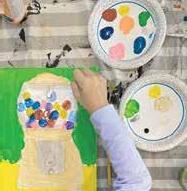
continued from page 31
A magnifying glass may be helpful in spotting them. Hand removal must be repeated every couple of days for at least two weeks after the last louse was seen.
Most people run straight to the drugstore for a box of Nix at the first sign of lice. But that may not be the most effective solution. Lice have become increasingly resistant to the pesticides in Nix and other over-the-counter treatments. For most treatment products, you will need a box for each person treated, and children with long hair may require two boxes to ensure thorough treatment. Some products will kill both lice and nits; others only kill adult lice and a second treatment is required to kill any nits that hatch later. Over-the-counter lice treatments are not safe for children younger than two months, or for some brands, two years. Even older children may be sensitive to chemicals in these treatments and experience itching or a burning sensation on the scalp.
health insurance may reimburse the cost. Some clinics charge a flat fee, others have an hourly rate. Some will even come to your home. They usually do not use pesticides. Instead, lice clinic technicians use a combination of hair oils and methodical combing techniques to physically remove the lice and their nits. Technically, it’s no different from what you could do at home (even proprietary hair oils are usually available for purchase) but they are professionals and can do the job faster and more effectively than most parents.
If an infant younger than two months gets lice, you should call your pediatrician — over-the-counter medicines and even many home remedies are not safe for very young infants. Call the doctor if your child’s scalp appears infected. Over-the-counter treatments may not be appropriate when there are open sores, soft scabs or pus, and these things could also indicate an unrelated health condition.
You should also call your doctor if your initial efforts have failed, and you know that you followed the directions correctly. You could be dealing with pesticide-resistant super lice. In that case, you will need a prescription for one of the three chemical treatments that still work against them. The cost will depend on your insurance, but falls in the range of $50–$150.



Even when resistance is not an issue, these treatments only work if you read and follow the instructions (which vary among products) to the letter. If you put conditioner on your child’s hair, don’t let the solution sit long enough, or wash hair too soon after treatment, you won’t get rid of all the lice. Don’t blow-dry hair after treatment either — some OTC products are flammable. You must continue lice checks and hand removal for two to three weeks after treatment. If you continue finding live lice more than 24 hours after treatment, the treatment didn’t work. At $25–$50 per treatment, trying different brands or repeating failed treatments can quickly become expensive — not to mention exhausting.
There are several lice treatment centers around Puget Sound. Their services are not cheap — expect to spend $150 or more — but they guarantee their services, and your
Most parenting challenges have a silver lining — overcoming them helps us grow as people or become closer to our children. Lice don’t really have an upside. The best we can do is learn the facts to get through an infestation with minimal fuss, and hopefully, fewer failed attempts. ■
Seattle-based freelance writer Gemma Alexander focuses on the intersection of parenting and the arts. When she’s not writing for ParentMap, she blogs at gemmadeealexander.com and tweets @gemmadeetweet.
Educational tours offer families opportunities for real-world learning any time of year
By Tiffany Doerr Guerzon
Greater Seattle area tours, where both kids and parents can learn something, are a great way to get out and experience new things as a family. But it can be hard to find tours that are interesting for both parents and kids. That’s where we come in. Spend a day touring a Navy destroyer that’s been transformed into a floating museum, taste different cuisines in ChinatownInternational District (C-ID) or see airplanes being assembled at the largest factory in the world. No matter where you end up, we know everyone in your family will learn a little something along the way.
Wing Luke Museum, Seattle
This museum in the ChinatownInternational District offers indoor tours of its on-site historic hotel, neighborhood walking tours and even food tours. Take the kids on one or all. You won’t be disappointed.
Indoor Historic Hotel Tours
Free with admission, you can join a tour of the East Kong Yick building, home of the museum. Dating back to 1910, the building once contained stores, hotels and even

family apartments. Step into the past to see the single bedrooms where laborers stayed, and a Chinese import/export shop. Staff say that kids especially love seeing the dried goods and other wares in the historic store, and parents will enjoy learning about the building’s rich history. Tours run Wednesday–Sunday, three times daily. First come, first served with a maximum of 15 people per tour.
On Saturdays at 11:30 a.m., Wing Luke Museum runs Chinatown Discovery Tours. These are walking tours that explore some of Seattle’s oldest historic neighborhoods. Tours last about 90 minutes and are stroller-friendly. Led by a docent, visitors will wind through Chinatown or Japantown to
explore the challenges of early immigrants. These tours also offer access to spaces not usually open to the public. The focus of the tours change every few months, so check the website for the current theme and costs before signing up.
In an interview, staff said that the docents are very friendly and flexible, and are happy to accommodate questions not covered by the current theme. They recommend these walking tours for kids ages 7 and older, and explain that younger children may also enjoy the experience, depending on their tolerance for walking and attention spans. Folks often enjoy a tour and then stop for lunch at a restaurant in the C-ID, they added.
continued from page 33
Tastes of the Chinatown Seattle International District
One of the best ways to explore the Chinatown-International District is through your taste buds. The Wing Luke Museum’s popular food tours offer unique insight into the various cooking styles and flavors of the C-ID. Each tour is different and visitors will sample cuisine from five different restaurants. Tours last about 2.5 hours and are packed with flavor and informa-

tion regarding the historical context of the food you sample. Staff say these tours are popular with kids ages middle school and up and of course, adults.
They are able to accommodate vegetarian diets with prior notice, but not vegan. They are not able to accommodate gluten, nut or soy allergies either.
The museum itself is also well worth a visit, with a great Bruce Lee exhibit. The museum allows visitors to leave and return during the same day, a helpful accommodation if kids need to get the wiggles out or get a snack. They participate in the Junior Ranger Program as an affiliate to the National Park Service, where kids can complete tasks to earn a badge.
USS Turner Joy, Bremerton
The USS Turner Joy is a naval destroyer museum ship moored in Bremerton. This floating museum offers a peek into the ship’s interior as it was when it was commissioned, between 1959–1982. Tours are self-guided and allow families to look around at their own pace, but there are docents available for questions.
Staff members say that kids are especially excited to climb the ladders, and explore the engine room, the bridge and the gun mount interior. Kids and adults will also enjoy seeing the bunks where sailors slept and other living areas to get a feel of what it was like to be stationed on a destroyer. Outside of the ship, there is a 70-pound projectile (the Navy term for bullet) in a sling that visitors can touch to get a feel for how truly enormous the artillery is. Online reviewers praise the extensive signage and information that tourists can read for information and historical context.
Tips for a successful visit:
• Allow 1.5–2 hours to fully explore the ship, especially if guests are maritime history buffs. However, you can divide your time on the boat if you like, if kids need a break or a snack. Simply save your ticket receipt and you can leave, go have lunch and then return.
• Currently, the ship is open seven days a week, with fewer days November–February.
• This is not stroller-friendly. (You can leave a stroller at the gift shop.) If you are bringing a small child, be aware that you will have to help them on the ladders. If you have an infant, using a sling or other carrier would be helpful to keep parents hands-free.
• Those with mobility issues may have trouble with ladders.
• Wear walking shoes as surfaces can
be slick, and dress in layers — the ship can get cold.
• If you decide to leave and return to the museum, be sure to return by 4:30 p.m. so that you have time to look around before the museum closes at 5 p.m.
Boeing Future of Flight and Boeing Everett Factory Tour, Everett Led by knowledgeable tour guides, this 80-minute tour takes you into the largest manufacturing facility in the world. The tour starts with an informational video detailing the milestones and timeline of aviation. In the factory itself, visitors will enjoy panoramic views from an observation deck of the factory floor and the different stages of wide-body airplane assembly. Tour guides share information on Boeing innovations and advanced manufacturing methods, and answer questions.
A Boeing spokesperson says that kids and adults alike are just in awe at the sheer magnitude of the facility, which could hold 75 football fields. Kids also enjoy seeing the 777 and 777X being produced. Don’t miss the mural on all six south side doors that holds the Guinness World Record for the largest digital graphic.
After the factory tour, visitors can check out menu items from Ivar’s, Caffe D’arte and Alki Bakery at the Paper Plane Cafe, or take in the views from the Sky Deck. Kids will love the Future of Flight Gallery, where they can take part in the hands-on activities available in the Boeing Engineering Zone, Boeing Aerospace Adventure Exhibit and Kids’ Zone.
There are height/age recommendations for the factory tour. If you have younger kids, you can still enjoy general admission to the Future of Flight which includes the gallery, Sky Deck and café, just not the factory tour.
• Children must be at least 4 feet (122 cm) tall to go on the tour.

• Carrying children on the tour is not allowed for safety reasons.
• Children under the age of 16 must be accompanied by an adult.
• For safety reasons, no items are allowed on the Boeing Everett Factory Tour. Complimentary lockers are available to use in the lobby. Please store all belongings before your tour time begins.


• No purses, handbags, waist pouches or backpacks
• No electronics, cameras, video equipment, phones or tablets
• No pens, pencils, notepads or binoculars
• No food or drinks
• No weapons
• No smoking or vaping ■
Tiffany Doerr Guerzon is a freelance writer and the thrifty mom of three children. She is the author of “Save Money on Groceries Without Losing Your Mind: 15 Strategies Anyone Can Use.”




Check out many more happenings online at parentmap.com/calendar
By Julie Dodobara

September brings the best of the seasons to the Pacific Northwest — summer has not yet officially ended, but crisper autumn days are on the horizon. What to do with the blue-sky, shorter days ahead? How about fun outdoor excursions with the entire crew to the fair, to the farm, or to a sunny sunflower field? Add a generous dose of fests, theater and a Lego convention, and you’ve got the makings of a month to remember.
� Affectionately known as MukFest, the Mukilteo Lighthouse Festival returns with fun kids activities, a parade and a huge fireworks show Friday–Sunday, Sept. 5–7. Simply follow the beacon that leads you to Lighthouse Park. Free.
� Two decades in the making, Seattle’s new 20-acre Waterfront Park is complete and the city is ready to celebrate the opening of its newest crown jewel, welcoming all to join the free party Sunday, Sept. 6, 11 a.m.–9 p.m. The allday party features live music, two community parades, family games, art, storytelling, dance workshops and more. You
won’t want to miss the fun!
� It’s a wonderland of towering blooms at the annual Maris

Family Farm’s Sunflower Days fest. As you frolic in the fields, snap the perfect seasonal selfie and let the kids play all day. Entry includes one bloom, a wagon ride, mega slide, ropes course and more kids activities. Saturday–Sunday, Sept. 6–7, 13–14 and 20–21. Admission $19.50 online or $25 on site; ages 2 and younger free.
� Behold thousands of creations built by Lego fans at the longest-running Lego fan convention in the world, brought to you by fellow devotees. Take inspiration for your own creations at BrickCon. It all happens at Meydenbauer Center in Bellevue, Saturday–Sunday, Sept. 6–7. Tickets $16–$19; ages 4 and younger are free.
Waterfront Park Grand Celebration
Waterfront Park
� Gather your bikes, helmets, water bottles and family members and pedal together during Bicycle Weekends. This enjoyable outing is made even better by the fact that a section of some of the best biking paths along Lake Washington Boulevard is closed to most vehicle traffic from Saturday morning to Sunday evening. Hit the pavement Sept. 6–7, and Sept. 20–21. Free.
� It’s time to do the Puyallup at the Washington State Fair. Brave the carnival rides, savor fair treats, admire animal exhibits and more. The Fair is on Aug. 29–Sept. 21 this year (closed Tuesdays, plus Wednesday, Sept. 3). Gate admission $13–$20; ages 5 and younger free; shows and rides extra. Discount for online purchase; additional deals available. Pro tip: Kidz Bop performs at the fair on Wednesday, Sept. 10 at 6:30 p.m. and tickets include fair admission.
� Our local flagship fish are returning home to the Issaquah Salmon Hatchery. View these impressive swimmers up close and join in themed activities for the whole family including arts and crafts, fly casting demos, painting projects and hourly rubber duck derbies at the Salmon on Sunset Celebration. Saturday, Sept. 13, 10 a.m.–6 p.m. Free.
� Celebrate the varied cultural traditions and cuisines of Latin America represented in our local community. Commemorating
the independence of Latin American countries, Fiestas Patrias welcomes all for food demos, kids activities, folkloric performances and more. Join the party at Seattle Center, Saturday–Sunday, Sept. 13–14. Free.
� Back for a second year, Kenmore Oktoberfest returns with Bavarian sing-alongs, family fun games, wiener dog races and, of course, beer at multiple locations around town. Join all the merriment of this autumn tradition, Saturday, Sept. 13 and Thursday–Sunday, Sept. 18–21. Free with fees for some activities.
� Seattle Children’s Theatre launches its new season with a high-energy spin on a favorite classic book. Making its world premiere, “Chicka Chicka Boom Boom: The Musical” celebrates letters, words, imagination and creativity with lively music and interactive storytelling. This play runs Sept. 18–Oct. 12. It’s recommended for ages 3 and older and tickets start at $38. Will there be enough room?
� ParentMap kicks off its new series of ParentEd Talks with the first of seven interactive discussions with experts on the most pressing topics parents are navigating. On Wednesday, Sept. 17, join founder of Kids Eat in Color, registered dietitian Jennifer Anderson, live from noon – 1 p.m. in a talk about nutrition priorities for families — or receive the recording to watch anytime. $10 for one discussion, or $50 for
Aug. 29–Sept. 21 | Select dates
Washington State Fair
Washington State Fair Events Center, Puyallup
Sept. 18 –Oct. 12
“Chicka Chicka Boom Boom: The Musical”
Seattle Children’s Theatre
SPONSORED EVENT
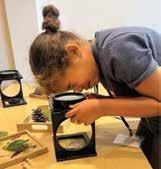
the entire series. Members of partner schools join for free.
� Located right in the heart of Seattle, the Rainier Beach Urban Farm brings agriculture right to urban dwellers. Stop by for a community fest celebrating local food, city farming and healthy living. Create tea bags, craft with nature, and mingle with goats, llamas and chickens. Free entry; food for purchase, on Saturday, Sept. 20, 10 a.m.–3 p.m.
� Bring something light or bright and join the gorgeous Luminata lantern procession around Green Lake to mark the start of fall, Saturday, Sept. 20 starting at 7:30 p.m. Purchase a lantern from the Fremont Arts Council, bring your own or make one at a free workshop leading up to the big event. Whichever you choose, it will be an illuminating and magical night. Free.
Creative learning begins with play
This fall, explore joyful STEAM programs at KidsQuest. Our playful, welcoming classes spark curiosity and build confidence through hands-on fun! kidsquestmuseum.org
� Crisp, juicy apples from Snoqualmie Valley orchards are ripe and ready. Celebrate the season with your family by pressing apples into cider and hopping on for a horse ride, among other fall fun activities at the Fall City Apple Festival. Proceeds support equine therapy for veterans and summer camp scholarships for kids. Sunday, Sept. 21, 10 a.m.–5 p.m. Free entry; food and some activities for purchase.
� When it comes to helping the planet, kids are leading the way. Bring yours to the Loyal Heights Community Center for the Sustainable Ballard Festival and get inspired to lower our carbon footprint and live more sustainably. They will have a blast racing solar cars, planting seeds for an edible garden and pressing apples into cider on Saturday, Sept. 27, 11 a.m.–4 p.m. Free. ■
Julie Dodobara is ParentMap’s calendar editor.







Move over Pinterest, AI is the latest tool parents are using to take kids parties to the next level
By Allison Sutcliffe

Recently I’ve been fascinated by the way parents are using AI to simplify their lives in creative, dare I say brilliant, ways. I’ve heard tales of dads using ChatGPT to write child- or even task-specific clean-up song lyrics. Moms who’ve used Claude to synthesize school syllabi and consolidate assignments so important deadlines are highlighted for their kids. And who are these geniuses that take pictures of their refrigerator contents and receive AI-generated recipe ideas that can be prepped in less than 30 minutes? (And can they be my kids’ parents, too? If you really think about it, the possibilities are endless: homework helper, travel agent, party planner.
If you haven’t caught AI fever yet, here are some ways it can do the heavy lifting for your next birthday celebration.
Generate a theme that’s as unique as your kid. Does your little one love dinosaurs and robots? Music and planes? Or maybe she’s more of a dolls and soccer kind of kid. Whatever interests excite them, AI can offer suggestions for decorations, activities and goody bag fillers that tie it all together.
Create personalized invitations. Remember that unique party theme AI created just for your kid? Use AI-powered Canva or Adobe to make one-of-a-kind invites to match, with one caveat: visually inspect the final product.



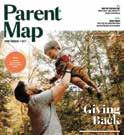




Plan the menu. If you want to go beyond pizza and cake, try AI. Not only can it come up with themed snack ideas, it can help navigate dietary restrictions when it does. It can even create your grocery shopping list for the event!
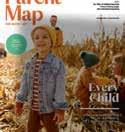





Create games or activities. Rely on AI to generate endless age-appropriate entertainment ideas, from personalized coloring pages (of the birthday kid and friends!) to a scripted, interactive choose your own adventure-style game to fit the party theme. Makes an at-home party seem more appealing, right?
On-the-spot activity help. If you run short of activities but the party isn’t over yet, call on AI to serve up dad jokes, kid-friendly trivia questions or even plan a mini craft using the two supplies you have left over from decorating. It’s smart like that, so you don’t have to be. ■
Allison Sutcliffe is ParentMap’s managing editor.


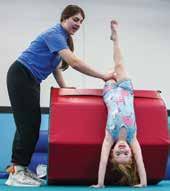








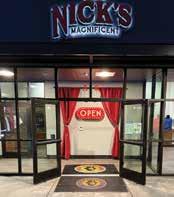
































Families making up to $350K never pay more than $16,350 per child or 15% of AGI, whichever is less. Private Jewish day school is now shockingly affordable.
See how affordable it is samisfoundation.org/jewish-day-school-affordability-seattle/